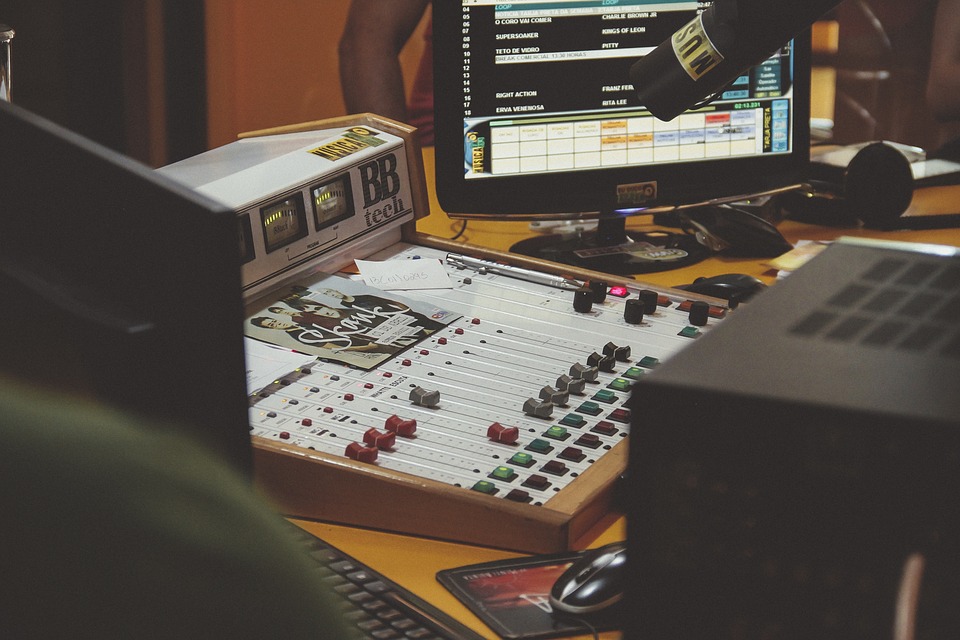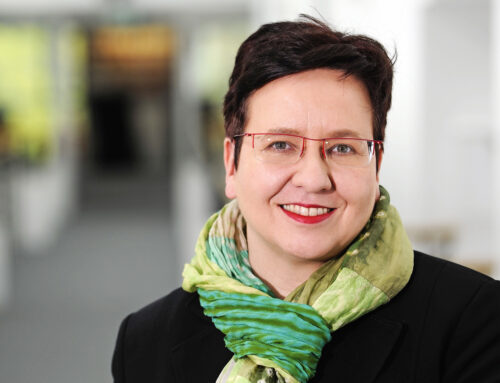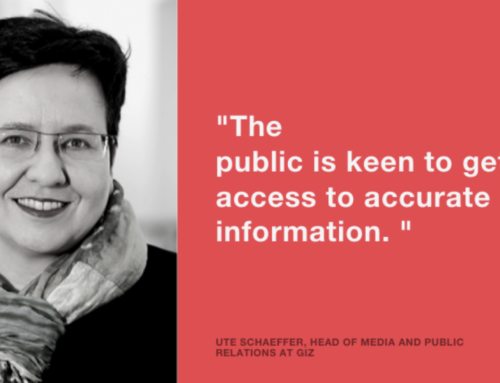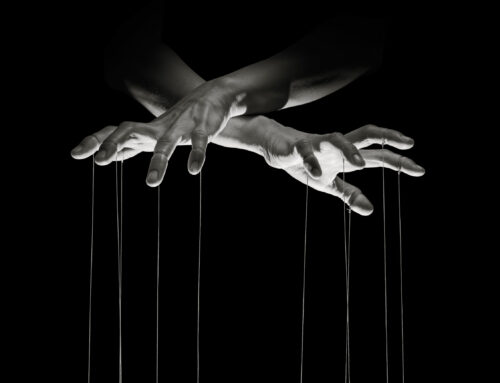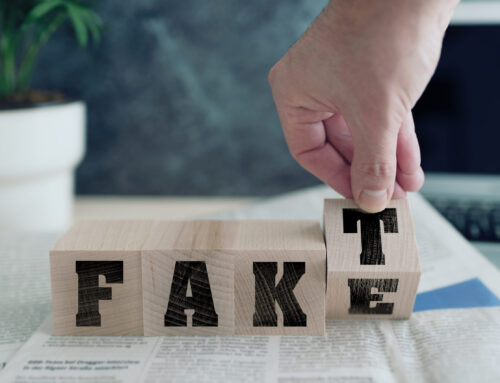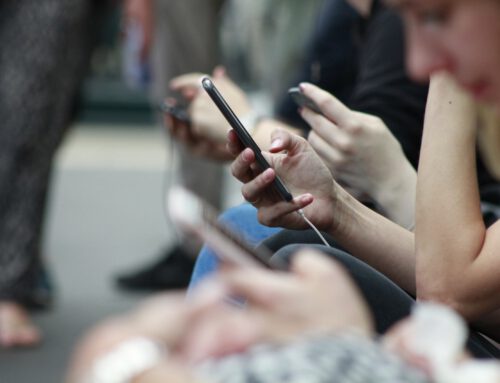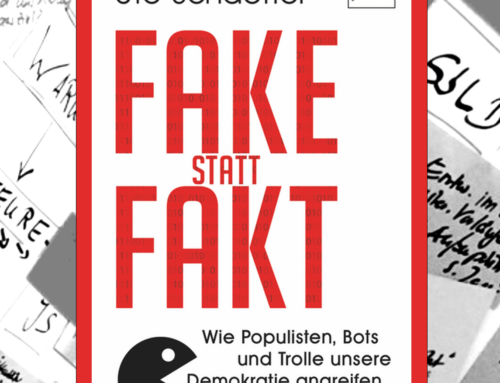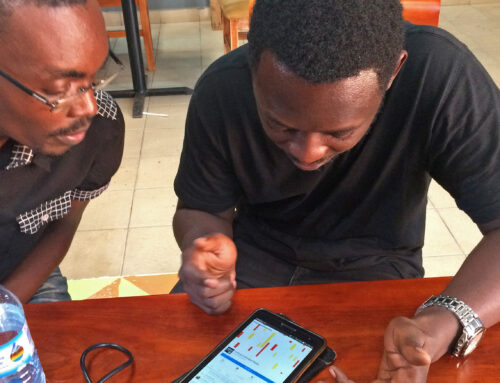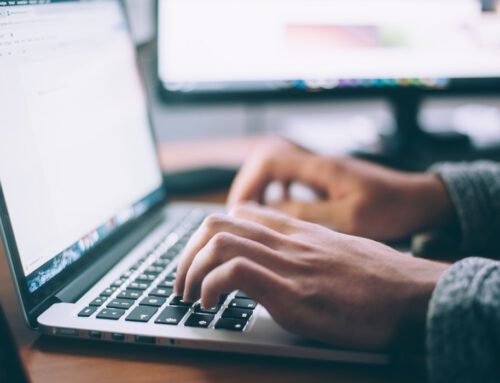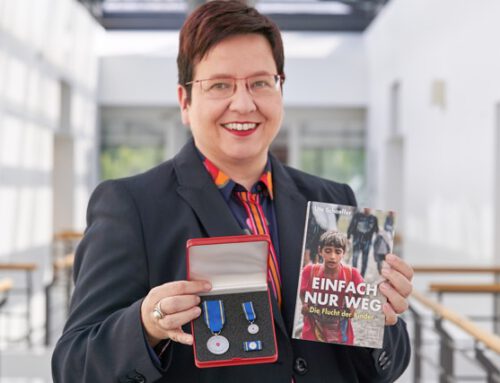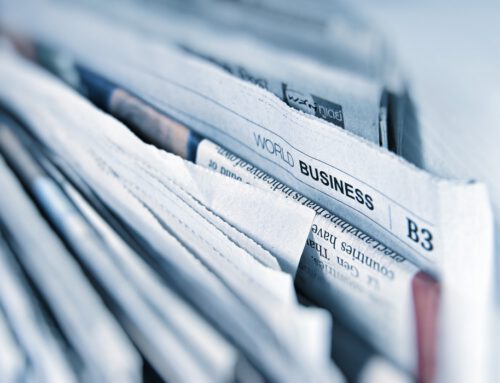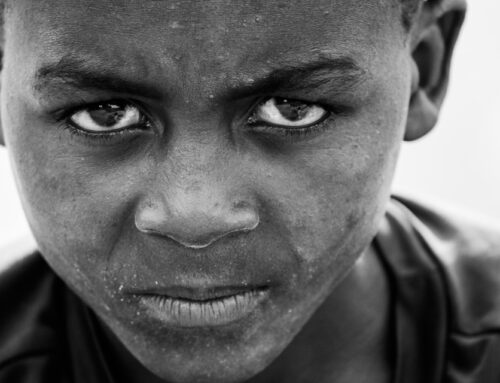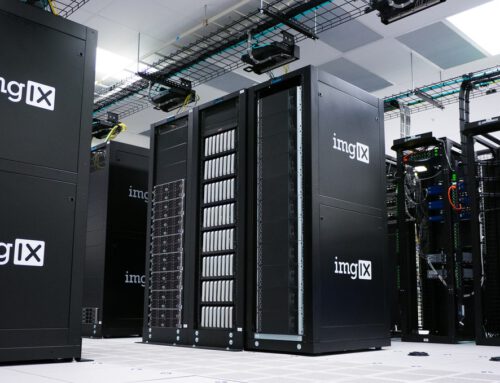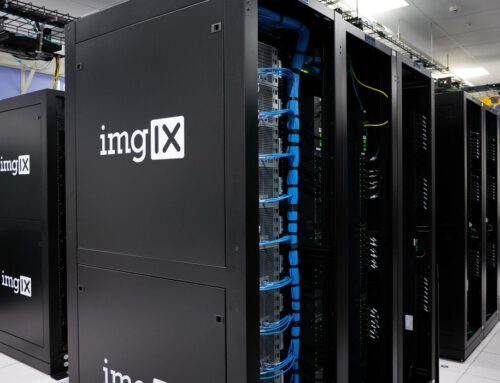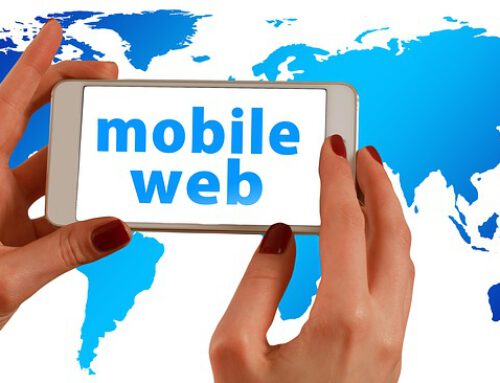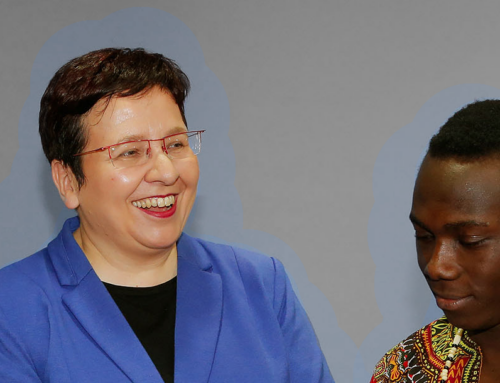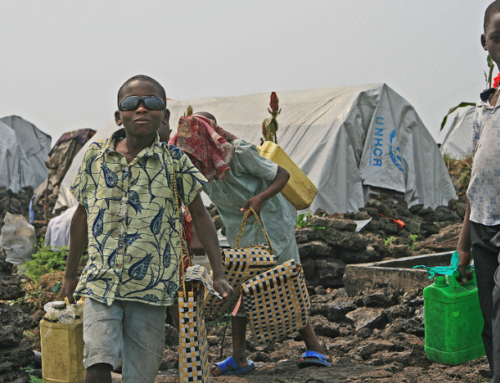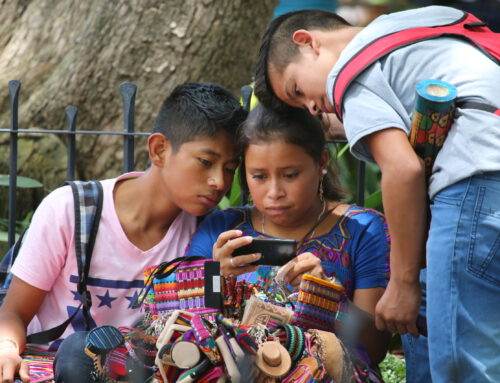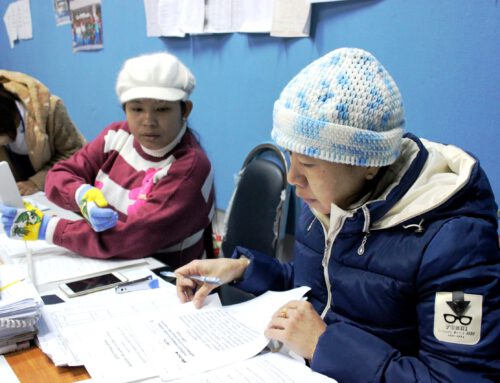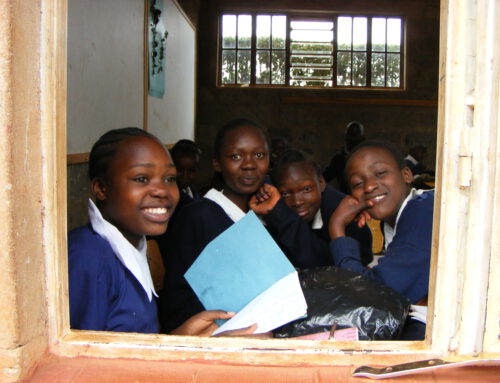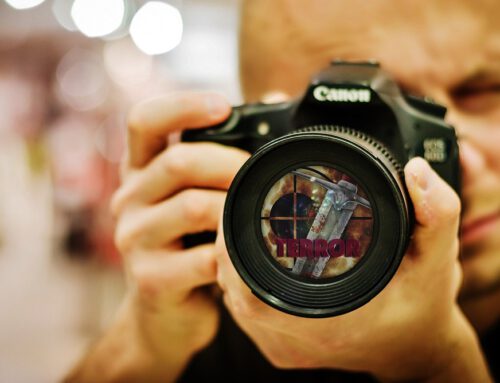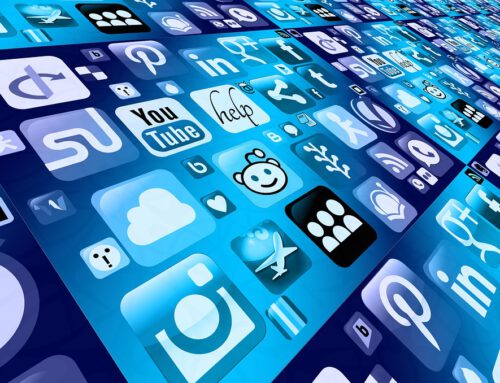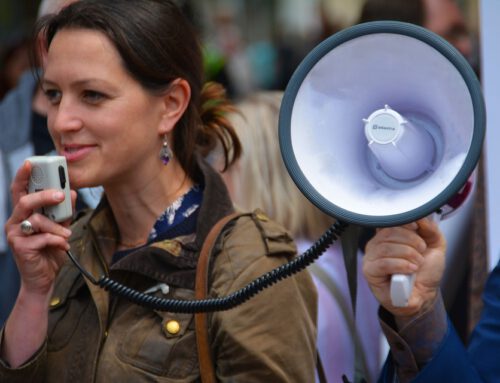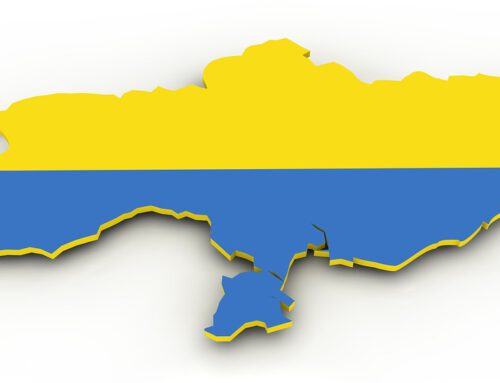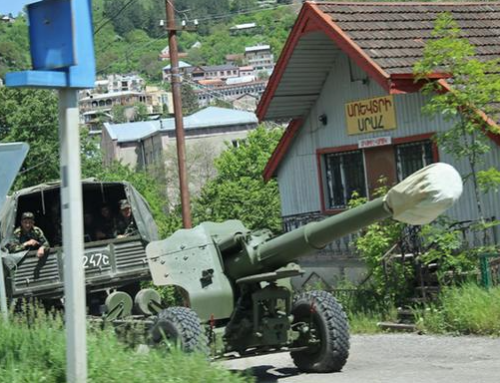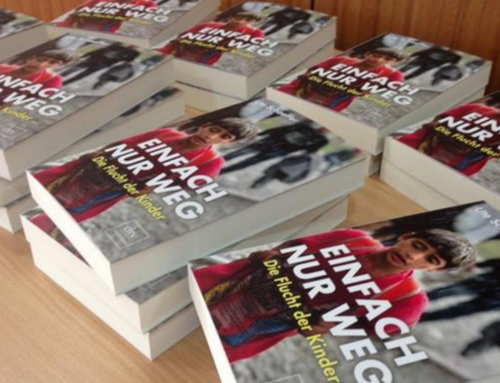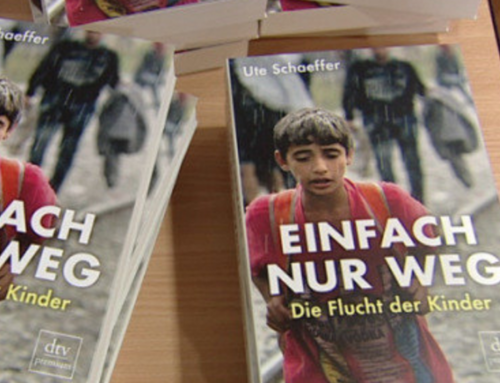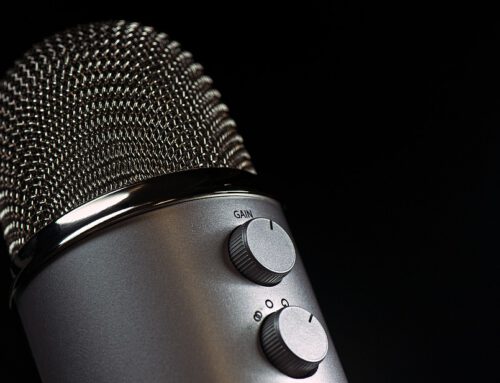Imagine a no-name land anywhere in Africa where women and men are heavily persecuted by maroding (?) violating extremists. Nothing extraordinary, only a very realistic example of how human rights are violated and neglected.
On 14th of March 2014, Boko Haram gunmen attacked the Giwa military barracks in the 500.000-people city of Maiduguri, Borno state, Nigeria. Later the military regained control again. More than 640 people, mostly unarmed recaptured detainees were murdered. Captured in a 35-seconds-clip of an unknown mobile user was what happened to one of the victims: The video showed a Nigerian soldier murdering an unarmed man in broad daylight. This clip came across the mailbox of Amnesty International. The NGO was able to confirm the exact location of the incident, and to verify the authenticity of the clip, which “was only the tip of the iceberg”, as Amnesty International’s Christoph Koettl explains. This user generated content, attentively verified by metadata and content analysis was used as the basis for the Amnesty International Report putting light in the atrocities in Nigeria
New watchdogs: Citizen Media investigate human rights and cover elections
Imagine an African regional powerhouse with a political, social and religious gapping between North and South. Hate speeches and violent attacks between Muslim and Christian people erupting frequently. A small hate-message, a cartoon or a blasphemic comment could cause violent attacks in certain regions. This country stands in the middle of a controversial election campaign where a new president should be elected. Bad times for journalists and media? Of course not! The current elections in Nigeria proved that the opposite is true: the quality and the way digital content is distributed makes a significant difference.
It is not by hazard that those two examples come from Nigeria, a country with one of the fastest growing Internet penetration rates in Africa.
The dimension of what (social) media could do became evident during the recent recognizable power shift. The presidential elections in Nigeria went well – for journalists, media users, and for the voters: Long before the Independent National Electoral Commission (INEC) shared any official polling numbers, Nigerians who had volunteered among the 700,000 electoral officers shared the regional voting results of their polling stations. President-elect Muhammadu Buhari’s All Progressive Congress party’s lead in the vote last month quickly became apparent a few hours after polling units closed thanks to technologically savvy Nigerian voters using social media to share each step of the process. In this case, the high percentage of active and educated media users contributed to a peaceful, accountable and transparent voting process.
These examples show: Citizen media and user generated content could raise political participation and accountability and simplify human rights fact-finding. Digital communication and Information is opening new ways to participate in political and social processes. It allows people to share and to connect. Moreover, it creates new possibilities to investigate on human rights’ violations and to put neglected or oppressed issues on the agenda. Non-governmental structures and journalists could use these potentials: They could directly include these new methodologies in their research process. In addition to that, digital communication offers new opportunities to learn and to increase knowledge. In its basic structure digital communication is inclusive. It could be an effective tool to enhance development. All this is possible right now, not tomorrow.
Freedom on decline – What Media Barometers say about African Media
So far the general assessment – let us take a closer look at African media reality and the current global trends which put this inclusive development target under challenges and risks. The biggest risk is censorship.
The differences among African states when it comes to press freedom are tremendous. The ranking of reporters without frontiers 2015 puts Namibia on rank 17 – quite better than a lot of European states. Look at the forerunners in press freedom: Namibia, Botswana, Ghana, the Comoran Islands and South Africa. These countries courageously developed, shaped and liberalized their media markets. They offer a diverse and rich variety of media outlets. And they are all Middle-Income countries! But also Burkina Faso and Niger are showing up in the class „Satisfying“ – as well as France, Great Britain, Spain and Portugal.
13 other African states – especially in the eastern part of the continent – show “recognizable problems” or are among those regions, where press freedom is in a very bad condition (as do Italy or Greece). Also, there is a high percentage of African states in the last two categories- Here you find most of the authoritarian governed countries like Eritrea (rank180), Sudan (174), Somalia (172), Djiboutis (170), Äquatorialguineas (167) und Ruanda.(161)
Many African media outlets suffer from serious structural weaknesses: no sufficient publicity markets, no economic basis for media outlets, interferences of owners, politicians and the lack of professional skills. Those factors create certain dependencies – be it by oligarchs or politicians.
This makes African media fragile in many regions: A situation that becomes even worse during conflict or war times. We have to acknowledge some alarming trends in Africa, especially in the zones of current conflicts.
Take Burundi : The political and not-yet ethical conflict there is also a war against the independent media. Since the first protest against a third turn of president Nkurunziza, the
Burundian government is offending journalists. The headquarter of different journalists associations in Bujumbura as the ‚Maison de la presse’ and the radiostations „Radio Publique Africaine” and “RPA Ngozi” have been closed down at the end of April 2015. These professional and independent media-houses are now voiceless. During the same period the number of aggressive and violent voices in the social media grew. Voices that escalate the conflict. On the 13th of May – during the attempted putsch – the Police fired with machine guns and grenades at buildings of four bigger private FM Stations (RPA, Bonesha FM, Radio Isanganiro und Radio Télé Renaissance).The head of the independent Media Association OPB (Observatoire de la presse au Burundi), Innocent Muhozi, reported that journalists have been physically threatened and intimidated before this attempted putsch. He also reported the existence of black lists with names of critical journalists. Since that day only the state broadcaster is able to broadcast – all other FM-radio-Voices have been silenced by government.
We’re not only seeing the newly emerging political crises like in Burundi but also new trends like the growing religious conflicts especially in Nigeria where people and media find themselves pulverized between the religious fantasts and the governmental forces.
In 2014 Reporters without borders counted 8 murdered journalists in the war countries Somalia, DRC, and Centralafrican Republic. Our colleague and Radiojournalist Elisabeth Blanche Olofio died in June 2014 because of a serious attack of militants of the Séléka-rebels. The allegation was that her “tongue was too sharp” (?).
War over mids and values – fundamentalist groups weaponize Media to a next extent
In some of these countries, where religious clashes and fundamental Islamist movements grow, new legislation decision block media freedom. There is a trend to put antireligious comments and reports under the suspicion of apostasy. One example is Mauretania, where the Blogger Mohamed Cheikh Ould Mohamed was sentenced to death because he “had fall off faith”. Before, he commented on the social order of his country and described it as “backward”. He also criticised some parts of the Koran. It was the first time since independence that the death penalty was applied because of apostasy. Another example is Somalia where one of the dominant Islamist movements „Union of Islamic Courts“ (UIC) published a code of conduct for media, demanding them to act in “strict cooperation with UIC” – which could be understood as an explicit intimidation to be conform.
Fundamentalist groups like this, the IS, Boko Haram or others are using digital communication to a new extent. They question our political order, they operate in a networked manner and across borders – and they are using information and the Internet’s dissemination channels as a weapon. These new asymmetric wars and conflicts pose new challenges for the affected society, the international community as well as for media development. It’s a war over minds.
In autocratic systems media is the first victim
And in Zimbabwe? On the 9th of March 2015, the human rights activist Itai Dazamara disappeared. The EU and the African Union requested clear efforts of the Zimbabwean government to bring light to his case and to stop increasing violations of human rights in the country. The alleged abduction of the leader of Occupy Africa Unity Square –an NGO primarily aimed at protesting and inciting mass action against the racial, economic and social inequality in South Africa – is only one disguising example of how fragile the human rights situation is.
The African Union also found clear words with regard to its chairperson Robert Mugabe: ”The continuous deployment of brute force as a way of dealing with citizens’ genuine grievances signifies the extent to which President Mugabe, aged 91, is out of touch with the myriad of challenges in his own country. Quite remarkably, it also proves the failure by his government to provide clear and tangible solutions to an economy battered and bruised by policy ambiguity, policy inconsistency and lack of imagination.”
Good performers in Media Freedom: many of Africa’s forerunners are middle-income-countries
A war of Web 2.0 information emerged in which media are deployed as a weapon to a new extent: to publicize and frighten, to recruit and spread targeted misinformation. These new players question our political system, operate in a networked manner and across borders. Both use hybrid methods: they rely on traditional means of waging war, highly modern weapons, on gaining territory, military aggression. However, propaganda and subversion, fright and publicity are likewise means of waging hybrid war. The new asymmetric wars could hardly have escalated so quickly if they hadn’t been able to rely on information and disinformation as tools.
So to say-Media: Hybrid and autocratic systems understand the relevance of media
There is another new trend: creating so-to-say media. What does that mean? Multiply your media and create modern, technically attractive media. Offer the users a multitude of content – but in essence no diversity of opinions and no liberty of expression. The forerunner of this global trend is Russia, where all audiovisual media are under the control of the Kremlin.
It is an ambivalent course – and there are african imitators, which follow this path of media-mainstreaming in Africa. Rwanda is one example of a contradictory media development policy: Freedom of media is guaranteed by the Rwandan constitution and the country’s media law was liberalized in 2013, allowing journalists to collect and distribute information and – under certain conditions – to treat sources of information under confidence. There is even a new law on the access of information, also protecting whistleblowers. Forced by quite critical assumptions of the international community on the estate of civil rights, right of expression and freedom of media, the Rwandan government started a political offensive in the media sector, creating a multitude of bodies, like the self-regulatory “Media Commission”, the Media High council, a state-organ which is responsible for journalistic training and education, and the Rwanda Utilities Regulatory Authority (RURA), responsible for questions of technical distribution and licensing.
Nevertheless it is not possible to report critically on the policy of president Kagame. It is not possible to critically discuss or comment his wish to prolong his mandate to a third term.
The result of media-policies in hybrid and semi-authoritarian systems becomes obvious when watching or reading local media: censorship by state authorities is quite rare, intimidations and mainstreaming of people sitting in responsible media positions occur more often – and self-censorship is part of the daily life in media and among journalists.
Building up democracy is still an analog procedure
Web 2.0.technologies and platforms could bypass state censorship and mainstreaming of media. But on the other hand it is obvious: These Web 2.0 Apps can build social networks but not democracies. The DNA of democracy consists of structures, institutions and political parties but not of tweets, likes and shares. There is no Facebook revolution! The build-up of a multiparty democratic system is still a quite analog challenge. Social media could be the first step towards a change but not the last – the hardest part of constructing a new order comes after the display of the cellphone went dark.
The Arab Spring showed the possibilities of social media but also the weaknesses in achieving long lasting political change. Tunisia is the only country where the people’s movement led to a challenging, sometimes contradictory and still reversible way of building up a democracy. In Tunesia’s neighbor country Egypt, the demands of the protestors in 2011 were crushed down. The freedom of speech is getting even worse: “Abdel-Fattah al-Sisi has restored the order in Egypt, but at a great cost […] As Mr Sisi has kept Egypt from descending into mayhem, he has unremittingly repressed critics. We don‘t have the luxury to fight and feud, says the president. But his authoritarian habits leave Egypt in the same condition as before the Arab Spring, when Mr Mubarak, another military man, ruled with an iron fist. Many say that the repression is even worse now.”
The social effect of better (technical) accessibility of information
It is good news for journalists, civil societies and users in regions of conflict or in autocracies: More people are using information today because digital communication is accessible in most parts of the world. The consequence is clear: Information today has a greater influence than ever on social, economic and political developments.
Why is media development the key? Firstly, people can only demand their rights in a political sphere if they have access to information. This determines issues such as education and knowledge, and ultimately a person’s personal freedom. Media does even have the power to decide on war or peace, as we’ve been seeing in Ukraine, Syria and Iraq.
Whether the media push developments ahead or simply slows them down depends on various key factors, including:
• conditions under which journalists work
• criteria and professional standards for content
• whether all groups of society have access to media
• whether people can deal with, and make use of, the flood of information
Think about the reality in your own country or your neighbor countries: Women’s issues in the rural areas of Burkina Faso, Mali or Uganda are rarely covered by the media. And how many reports do you remember about the lack of health care in rural areas of your country? There are many social groups who do not have a voice in national media – and neither do their major concerns such as education and health. And there are still a lot of official political and unofficial social taboos: Gays and lesbians in Uganda are politically sidelined, ignored or even harassed by the media. Classifying violent acts as “Ethnic clashes” is an absolute no-go in Kenya. And in many countries reports on the health of the president or the battle of power in the second row of the state party are impossible.
This is partly due to censorship but more often it’s a result of politically biased editorial offices, corruption or self-censorship. To free information, we – the journalists – are obligated to get our users, readers and listeners engaged – to invite them to participate in content-production. The journalist of tomorrow will rather be a wise and neutral moderator, a curator and aggregator of content than a world-explainer.
The new competitors – chance and challenge for Media
“News spaces are no longer owned by newsmakers.” This is a clear-cut description of new competitors, made by Emily Bell, director of the tow center for digital journalism at the Columbia University. “The press is no longer in charge of the free press and has lost control of the main conduits through which stories reach audiences. The public sphere is now operated by a small number of private companies based in Silicon Valley. In a world where we navigate our daily lives through social platforms, just how this information reaches us, what is on a ‘trending’ list, how these algorithms work, becomes not just of marginal interest but a central democratic concern.”
And another short reminder of the facts: Facebook has 1.3 billion users, around 20 per cent of the world’s population. The social network has more than 100 million monthly active users in Africa. Nearly 10% of all Africans use Facebook on a regular basis. That’s also half of the 200 million Africans that are connected to the Internet, according to Facebook. And more than 80% of Facebook’s users in Africa are accessing the site from their mobile devices. According to Ericsson, a communication infrastructure company, the number of mobiles in Africa will rise to 930m by 2019. YouTube has a billion users and a hundred hours of video are uploaded to the platform every minute. Twitter does now have over 300 million users. Instagram, Snapchat, WhatsApp and WeChat are rapidly becoming default platforms for younger audiences. Internet use on mobile phones in Africa will likely increase 20-fold in the next five years.
Let us take the media mega trends in view – Think Big and act digital!
Journalism’s future and the capacity of users to participate in politics, in communication and decision-making are increasingly dependent on communication technologies. And journalism today and tomorrow will no longer control or own the means of production or routes to distribution. For Africa this global trend creates special tasks:
– Because major parts of the continent are not connected to quick Internet-networks,
– Because Internet usage is still to costly
– Because users are not able to use text information due to illiteracy
– Because African sources, African stories and African content are dominated by stories from the global north
Nevertheless African media-makers and users have to compete under these difficult conditions.
There is no alternative for African Journalists and Media than to be prepared for this new competition in digital communication – Look at the “millennials”: media consumers born in the decades around the year 2000. How does this young generation – around 20 years – use media? What we know is: they like videos, but they do not watch TV. And they do not read newspapers. A vast majority of them gets their news from social media – especially from Facebook. 88 percent of the millennials use media reports and information via Facebook, 83 percent via Youtube, 50% via Instagram, 36 % via Pinterest, 33 percent via Twitter, 23 % via Reddit and 21 % via Tumblr. Whoever wants to get news, information or messages to these younger audiences must use web 2.0 applications. “If the news is important, then she will find me” – this statement of an America student in 2008 will soon be also a reality among urban audiences in Africa.
Digital gap will grow if we do not work on capacities of producers and consumers
It is time to wake up: this trend is a tremendous challenge for African journalists, media and media policy. The most serious effect is that the digital gap could become deeper. And it is not only existing between the global north and the global south. In regard to Africa it consists between poor and rich, cities and rural areas, connected and non-connected regions – and between literate and non-literate people.
To overcome these gaps means to not only work on the technical access to the Web, to create ICT-Labs and expand broad-band networks. It needs a multi-level approach: We have to work on the capacities to use media – be it the capacity to write and read or to navigate in the global jungle of sources to find the relevant ones.And we have to work on the capacities of the producers, be it journalists or civil society to raise their voices in an effective manner to reach their audiences.
And we should continue to work on the quality of journalists, with the aim that they could compete and interact in this new competition of Digital Communication. The Internet has fundamentally changed journalism at every stage: from research to production to choosing multimedia formats to tell the stories. This requires new skills and is the reason why partners all over the world are increasingly asking for digital training. Which interactive journalism formats are the best? How can journalistic contents be better presented online? How could we integrate user generated content in our programming? These are questions which need progressive, flexible answer which are appropriate for conditions under which African media work.
We have to stop talking theoretically on the “rosy” prospects for development delivered via the Net in Africa. The reality is, that there is little chance that “the Web” or any Web Content could accelerate African development if we do not work on this capacities issues, including higher and basic education and research infrastructure. Having understood this link, the global North started to invest more in media development.
It needs a fundamental effort to enhance independent and professional media production and to strengthen journalists, users and communities to deal with the opportunities of the (new) media. Independent and pluralistic media are of paramount importance to ensure that people know their rights and are also able to claim and exercise these rights. This is why KAS and also the institution for which I work, DW-Academy, work a broad strategic approach taking the digital development in the specific region into account. We built our media-development-work up on different stakeholders – in the aim to make them responsible, to built up capacities and to establish solid structures. This is the reason why we work with quite different “agents of change” in the sector of media development: on governmental structures AND non-governmental Organizations, on journalists AND on universities, on users AND on community radio stations. We support press councils, professional associations and media organizations so that they can clearly represent and protect their interests in discussions with political decision makers. If they all understand themselves as involved and requested in the challenge of media development, then we will get sustainable results. We share a deep conviction: media development is the key to more democratic, free and inclusive societies. Digital communication is offering new fields of action – and journalists and media should know how to deal with them!

